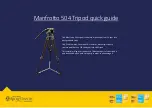
ZED-F9R - Application note
UBX-22035176 - R01
Contents
Page 19 of 30
C1-Public
6
Sensor fusion setup
The final and most important part of the setup is setting up the receiver for sensor fusion. The
receiver depends heavily on the internal IMU data, odometer data from the vehicle, and proper
configuration.
6.1
Providing odometer data to the receiver
As mentioned in 1.1.4, the receiver requires either wheel ticks or speed data to be supplied to it. Wheel
ticks may be sent through either the dedicated pins for wheel ticks and direction, or through a serial
interface as UBX-ESF-MEAS messages. Speed data may be sent through a serial interface only. The
rest of the chapter covers cases where the serial interface is used. Consult chapter 3.2.5 of the ZED-
F9R Integration manual
for a detailed description of wheel ticks and speed.
6.1.1
Wheel ticks
Wheel ticks represent the rotation of a wheel: every rotation generates a constant number of ticks.
Through the wheel tick sensor resolution (ticks per revolution) and wheel diameter, the information
can be converted into the distance travelled by the wheel.
The wheel ticks should be absolute, meaning the value starts from zero and increments regardless of
the direction of travel. The direction is indicated with its own bit in the input message.
Wheel ticks can be input from either a single source (single tick) or from both the rear-left and rear-
right wheel of a vehicle. When providing a single tick, the value should represent the vehicle’s
movement at the center of the rear axle. This can be achieved by averaging the wheel tick
measurement of both rear-wheels. Providing rear-wheel ticks is preferred whenever available. The
UBX-ESF-MEAS data types for wheel ticks are:
•
single tick = 10
•
rear-left wheel tick = 8
•
rear-right wheel tick = 9
For optimal performance, the wheel tick resolution should be less than 5 cm, i.e., one tick should
correspond to a displacement of 5 cm.
6.1.2
Speed
Speed is input as a signed value in millimeters per second. The UBX-ESF-MEAS data type for speed is
11.
6.1.3
Data stream quality
When sending odometer data with UBX-ESF-MEAS messages, ensure that the data stream is of good
quality. For optimal performance:
•
Supply odometer data at a rate of 10 Hz.
•
Send data at even intervals, e.g., every 100 ms for 10 Hz input.
•
Data must be sent with delay less than 10 % of the sampling interval.
•
Data loss must be less than 1 %.
•
Give odometer data priority over other communication with the receiver. If the odometer data
stream is being hampered by other data, a separate serial port may be used.
•
Use the highest baudrate available to minimize the latency caused by transmission.












































